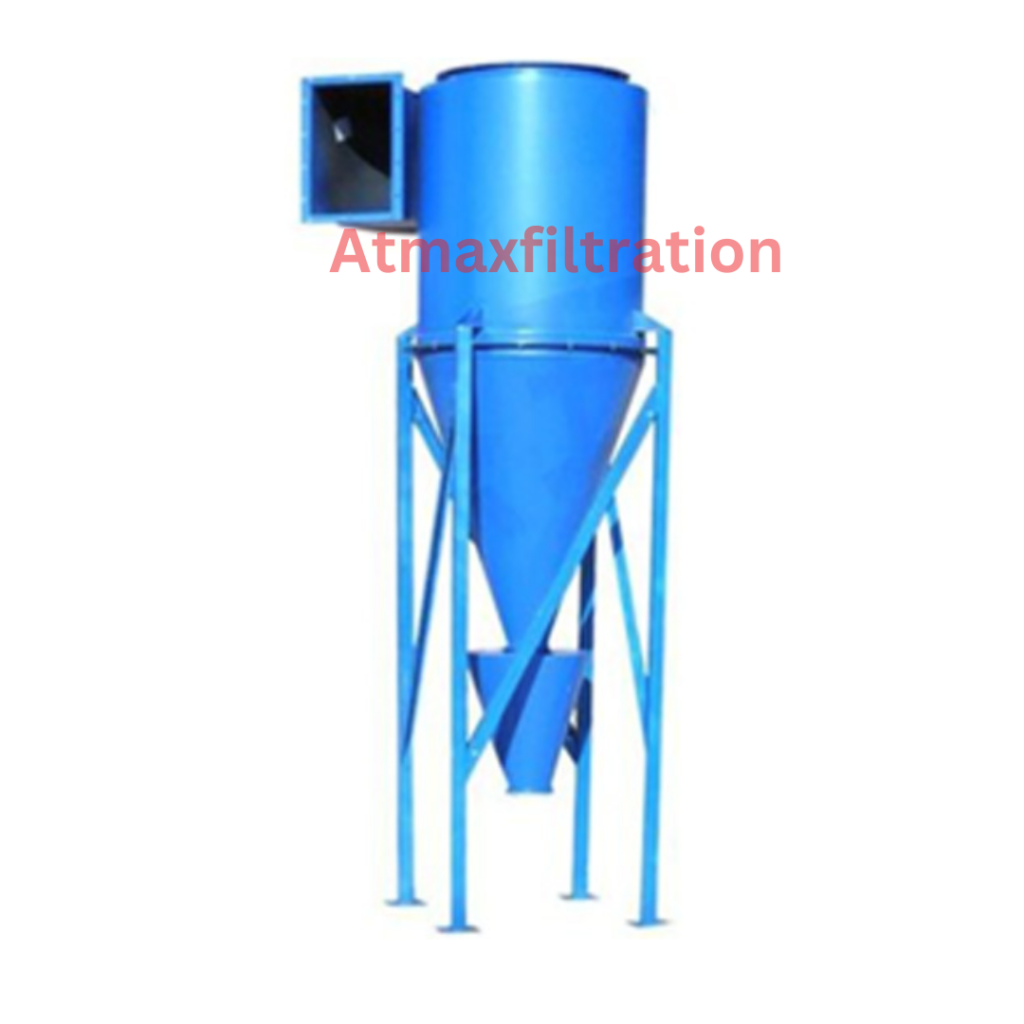Efficient dust collection is crucial for maintaining air quality, ensuring worker safety, and protecting equipment in industrial settings. Two of the most popular options are cyclone dust collectors and baghouse collectors. While both serve the purpose of removing dust and particulate matter from the air, they operate differently and suit different applications. In this guide, we’ll compare the two systems to help you determine which one is the right choice for your needs.
What Are Cyclone Dust Collectors?

Cyclone dust collectors, also known as centrifugal separators, use centrifugal force to separate dust particles from the air. When air containing dust enters the cyclone chamber, it is forced into a circular motion. The heavier dust particles are flung outward to the walls of the chamber, where they lose momentum and fall into a collection hopper. The cleaner air then exits through the top of the unit.
Key Features of Cyclone Dust Collectors:
- No moving parts, making them low-maintenance.
- Suitable for handling coarse and heavy dust particles.
- High efficiency for pre-separation in multi-stage systems.
- Typically used as a pre-filter before finer filtration systems.
What are Baghouse Dust Collectors?

Baghouse collectors use fabric filter bags to trap dust particles. Dust-laden air passes through the fabric bags, and the particles are captured on the surface of the bags while clean air exits. Periodically, the bags are cleaned using methods like pulse-jet cleaning, shaking, or reverse airflow, allowing the collected dust to fall into a hopper below.
Key Features of Baghouse Dust Collectors:
- Highly effective at capturing fine and sub-micron particles.
- Can handle high air volumes and variable dust loads.
- Require periodic maintenance to replace or clean bags.
- Offer customizable configurations for different industries.
Comparing Cyclone Dust Collectors and Baghouse Collectors
1. Dust Particle Size
- Cyclone Collectors: Best for capturing larger, heavier particles. Ineffective for fine or very light dust.
- Baghouse Collectors: Highly efficient at capturing fine and sub-micron particles, making them suitable for applications with stringent air quality requirements.
2. Airflow Volume
- Cyclone Collectors: Can handle moderate to high airflow volumes but with reduced efficiency for fine dust.
- Baghouse Collectors: Ideal for high airflow volumes with consistent efficiency across a wide range of particle sizes.
3. Maintenance Requirements
- Cyclone Collectors: Low-maintenance due to the absence of moving parts. Minimal upkeep required aside from occasional hopper cleaning.
- Baghouse Collectors: Require regular maintenance to clean or replace bags. Cleaning systems (e.g., pulse-jet) increase complexity.
4. Energy Efficiency
- Cyclone Collectors: Typically more energy-efficient due to lower pressure drops and no need for cleaning mechanisms.
- Baghouse Collectors: Higher energy consumption due to fans, cleaning systems, and higher pressure drops.
5. Initial Cost
- Cyclone Collectors: Generally lower initial investment, making them cost-effective for smaller operations.
- Baghouse Collectors: Higher upfront costs due to the need for filters, cleaning systems, and complex setups.
6. Applications
- Cyclone Collectors: Suitable for industries like woodworking, metalworking, and agriculture, where coarse dust is prevalent.
- Baghouse Collectors: Widely used in industries like cement, pharmaceuticals, chemical processing, and power plants where fine dust must be controlled.
When to Choose a Cyclone Dust Collector
- When dealing with large, heavy dust particles.
- If you need a pre-filter for a multi-stage dust collection system.
- For industries with lower air quality requirements.
- If you prioritize low maintenance and energy efficiency.
When to Choose a Baghouse Dust Collector
- When capturing fine and sub-micron particles is essential.
- If your facility has strict air quality regulations to meet.
- For applications with high airflow and variable dust loads.
- If you can allocate resources for regular maintenance and higher energy costs.
Can You Use Both Systems Together?
Yes! Cyclone dust collectors and baghouse collectors can complement each other. A cyclone collector can act as a pre-separator, capturing larger particles before the air moves to a baghouse system for fine filtration. This setup reduces the load on the baghouse, extending filter life and improving overall efficiency.
Conclusion
Choosing between cyclone dust collectors and baghouse collectors depends on your specific application, dust characteristics, and operational priorities. Cyclone collectors are cost-effective and low-maintenance solutions for coarse dust, while baghouse collectors offer unparalleled efficiency for fine dust and stringent air quality requirements.
If you’re unsure which system to choose, consider consulting with a dust collection expert to design a system that meets your needs effectively and efficiently.
Atmax Filtration provides highly efficient Cyclone & Baghouse dust collectors in New Jersey, New York, Pennsylvania, Delaware. Reach out to our team of experts to learn about the best solutions tailored to your needs. Protect your workforce and maintain compliance today.
